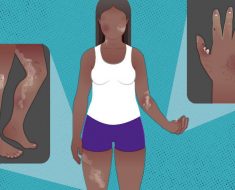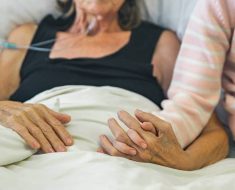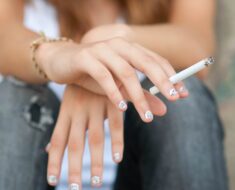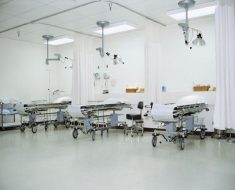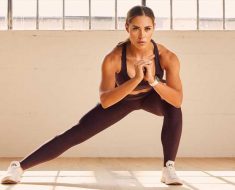- People who said they frequently used public transportation were more than four times as likely to have tested positive for SARS-CoV-2.
- Those who said they practiced strict outdoor social distancing were just a tenth as likely to have tested positive.
- The key to limiting exposure is to limit the amount of time in places where there is a high concentration of viral particles in the air.
The stricter you are when it comes to social distancing, the less likely you are to contract SARS-CoV-2, the virus that causes COVID-19 — and vice versa, according to new research.
A team from Johns Hopkins Bloomberg School of Public Health surveyed a random sample of more than 1,000 Maryland residents. The report was published earlier this month in Clinical Infectious Diseases.
People who said they frequently used public transportation, for example, were more than four times as likely to have tested positive for SARS-CoV-2. Those who said they practiced strict outdoor social distancing were just a tenth as likely to have tested positive.
“Our findings support the idea that if you’re going out, you should practice social distancing to the extent possible because it does seem strongly associated with a lower chance of getting infected,” said Sunil Solomon, PhD, an author and associate professor at Johns Hopkins University School of Medicine.
Lowering your risk
Social distancing can be applied in many ways, but it boils down to two: Staying inside, or practicing risk management if you do go out, said Christopher P. Morley, PhD, chair of the Department of Public Health and Preventive Medicine at SUNY Upstate Medical University.
“Air, essentially, is a solution,” Morley explained. Because SARS-CoV-2 is transmitted through the air, people can encounter higher concentrations in places where more viral particles can build up. The key to limiting exposure is to limit the amount of time in places where there is a high concentration of viral particles in the air, he said.
When in a place where there may be a higher concentration of potential virus, you should wear a mask, keep distance from others, practice hygiene, and get out of the place quickly. Avoid high-risk places where you can’t reduce time or susceptibility, he said.
“Strict social distancing really means not coming within six feet from others, especially indoors,” said Marney A. White, PhD, an associate professor of public health at Yale School of Public Health.
Public indoor spaces, such as a place of worship or a store, can be made safer by using barriers to improve social distancing.
“The concern, however, is airflow in indoor spaces,” White explained. “There are some situations where the indoor air flow could make it so that the six-foot guideline is not really enough.”
“To adhere to strict social distancing where there is zero risk of transmission, these public spaces should be avoided. Unfortunately that is unrealistic for many people, so the best advice is to remain socially distanced as much as possible,” White said.
“Strict” social distancing would mean that people are not going out in public at all, White added.
What is safe?
In New York state, many are mandating masking when inside, and people aren’t stopping to talk, Morley explained.
“If you are careful and get through a grocery store quickly for necessary items, that seems to present a relatively lower risk, because people behave differently in that environment than, say, a restaurant or a worship service,” he said.
If people are singing and talking such as in indoor restaurants or places of worship, and not masked, “that is a more risky situation,” he added.
Taking a long ride in a packed bus isn’t wise either, but Morley said he understands that some people cannot avoid doing so because they may have to use a bus or train to get to a job that cannot be done at home.
That’s probably part of the reason the virus has affected communities differently, he pointed out.
People who have to take public transportation should practice distancing and hygiene, and wear a good mask instead of a bandana. “A thick, multi-layer cloth mask can also be effective, but have a few, and wash them,” he advised.
Outdoor activities have more diluted air available, and indoor activities you can do quickly, non-socially, and in a mask, appear to be less risky, Morley said.
“Certain activities are less risky than others, but they still carry some risk,” White noted. “Eating or socializing outdoors is much safer than indoors, but even so it is not without risk.”
Ideal safety
The study didn’t ask people why they participated in certain activities, or how they felt about doing it. There may be relationships between the variables that are unexamined.
For instance, it’s entirely possible to go to a house of worship where everyone is masked and standing 12 feet apart and entering and leaving at the same time, Morley said.
“You can’t take from the survey that it is impossible to worship. However, the data indicate that this sort of ‘ideal’ safely constructed worship service is not the norm,” he said.
Solomon said his team didn’t ask for a lot of detail, and plans to ask more in future studies.
“The challenge is that people who report one activity are also more likely to report others and so it is hard to attribute risk to one particular activity versus the other,” Solomon told Healthline.
“We can conclude that the indoor activities with a lot of people appear riskier and this is consistent with other findings and our knowledge of how the virus spreads. What is clear is that there are no absolutes,” he added.
Hunker down
Morley said he favors doing so because viral epidemics typically have shown a seasonal second wave. Reopening prematurely will generate outbreaks, Morley said.
“As long as the virus is still present and being transmitted, and we have not achieved widespread immunity, fall and winter force us to go back inside, leading to all of the conditions that are probably higher risk. I hope I am wrong, but we are ripe for new outbreaks. Hunker down,” he said.
White echoed Fauci’s advice.
“There are definite benefits to hunkering down, even where COVID-19 is declining, to ensure that the rate of transmission does not increase again. The more people mix, the greater the risk of transmission,” she said.
Amira Roess, a professor of Global Health and Epidemiology at George Mason University in Virginia, also agreed.
“The advice to hunker down is sound,” she told Healthline. “We are still trying to keep the curve flat in order to keep hospitals from getting overwhelmed.”
Morley’s
“There is wide evidence that social distancing works,” he explained.

Source: Read Full Article

